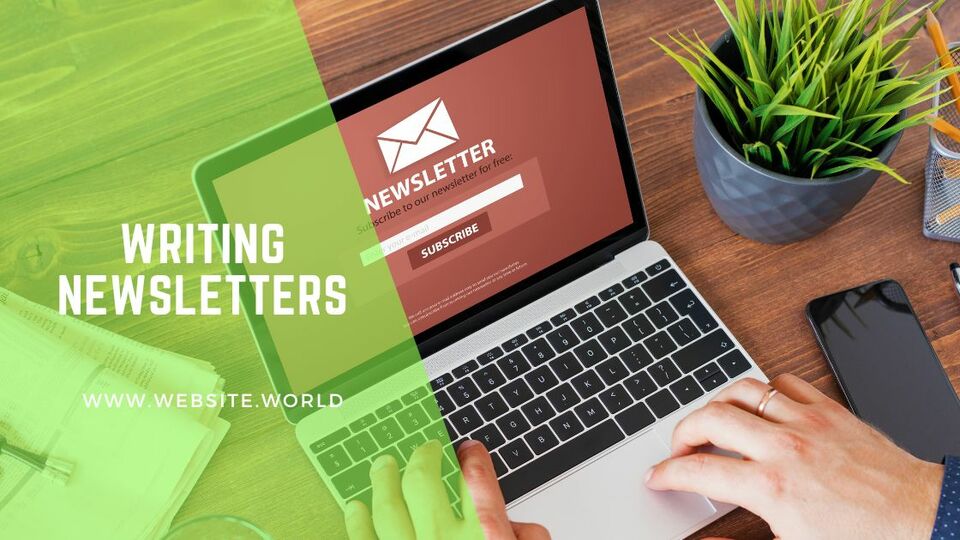How to Write an Email Newsletter Which Gets Read

Email newsletters are a great marketing tool to attract new customers and keep your business in the minds of your existing or previous customers. The issue is, so many newsletters are left unopened or deleted upon arriving in an inbox. How do you:
- Get your newsletters opened and read?
- Get the links in your newsletters clicked upon?
Like with any content, you need to give your readers what they want. To do this, you need to know your target audience really well, and this means creating a buyer persona for them. Once you know their specifics (age, location, gender, likes, dislikes, finances etc), you can target your content to specfically meet their needs. Doing so will help you improve your open and click through rates.
Today we're going to focus on three things: characteristics of high performing email newsletters, how to set your newsletter out and content ideas for your newsletter. We'll also share two free tools you can use to check the effectiveness of your email subject headings.
Characteristics of Email Newsletters With High Open & Click Through Rates
What does an email newsletter which gets opened and read have that mine doesn't? The key characteristics of a successful newsletter are:
- sent on a regular basis
- are easy to navigate with white space, images and headings
- have accurate subject lines and headings, not click bait
- use a reliable bulk email platform
- include a call to action
- are personalised to the reader
- contain 90% educational and 10% promotional content
- shorter, rather than longer
- use time sensitive offers
If you think about how many emails you receive each day, and what motivates you to open or delete them, you can understand some of what your mailing list is feeling. In conclusion, a great email is short, gives the reader exactly what they want in a format they can navigate easily, and where you clearly tell the reader what to do next.
Tips On Designing Your Email Newsletter
Before you choose a newsletter template or decide upon its design, write your content first. It is far better to have an email designed just for the content, as it looks and performs better. It's also a good idea to use the email template the same each time you send a newsletter. Take a read of these tips to help you design your next newsletter:
- use a mobile friendly bulk email solution
- keep your text short and to the point
- put important things at the top
- use white space effectively
- choose colours and fonts which match your brand image
- use great images
- use buttons to help you with your calls to action
- use section headings to space your content out
Most importantly, before you hit the send button, send a test email to yourself so you can check it looks and performs how you want it to.
What Newsletter Content Do Readers Enjoy?
As mentioned earlier, the specific content that you add to your email newsletters must be targeted at your audience. This means it needs to contain information that they specific want and enjoy reading. Obviously though, you want to keep it related to not only your business and industry, but to also meet the reasons why your audience signed up to your email list in the first place.
Exactly what content you add will depend on your audience's preferences, but remember that each newsletter you send should have a goal, and this is what you will use your calls to action for. Generally it involves clicking from the newsletter through to your website to perform a specific action. It could be to learn more about a new product or service, or to sign up to an event.
Examples of newsletter content include:
- photos of recent events
- employee focus blurbs
- snippets and links to blogs
- interesting facts related to your business or industry
- focus on one of your customers
- contests
- special deals and offers
- events of interest
- list of recent accomplishments
- product reviews
- company news
Now are you ready to send your newsletter? Nope. There is one more thing you need to know about: how to write an email subject. This is the first line people will read when your newsletter arrives in their inbox. If it is dull, your email won't get opened. If your subject line makes too many promises, or is not an accurate description of what the email contains, it will be opened but future emails won't be.
The ideal email subject line uses the 4U method:
- urgent - need to open the email now to avoid missing out
- unique - has different content to emails you've sent in the past
- ultra-specific - is based around one specific topic
- useful - will have lots of relevant information
There are some great free email subject testers available online, which you can enter your subject line in and they will give you an indicator of it's possible performance. Both SubjectLine and CoSchedule are useful tools for this. You can also take a read of our article Best Newsletter Email Subject Line Examples & How to Write Them for further advice too.
Once you have sent your newsletter to your mailing list, you can also share it on your social media platforms. Take a read of our article 50 Social Media Post Ideas for Businesses if you're stuck on ideas about what you could post on social media.
Posted: Friday 5 April 2019

